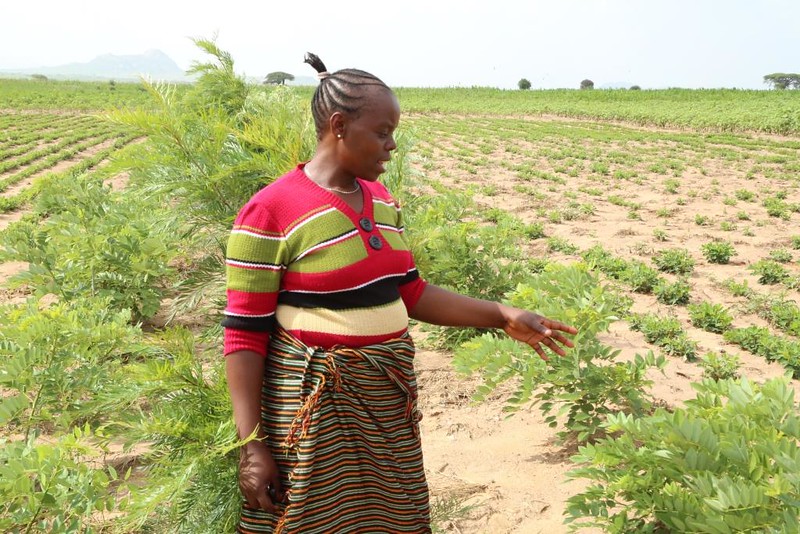Barking up the right tree: Multipurpose trees help Tanzania smallholders build a resilient farming system

Winnie Saigodi, a mother of five, from Moleti village in Kongwa District, Tanzania, had long given up on ever harvesting any meaningful produce from her one acre farm.
‘I completely lost hope because for five years, I hardly harvested anything from the farm despite cultivating different crops. Nothing grew well and soil erosion was also a major problem,’ Saidogi says. She eventually left the land fallow until researchers from the World Agroforesty Centre (ICRAF) working with the Africa RISING project visited her and asked to use part of her farm for research trials on growing multipurpose Gliricidia (Gliricidia sepium) trees, which can be grown for fodder, wood supply, wind erosion control and soil fertility improvement.
She readily accepted because she had nothing to lose. Two years after the research and demonstration trials started, her opinion about the productivity of her land has completely changed.
What she has seen has convinced her that she and other smallholder farmers in Tanzania’s soil erosion battered districts of Kongwa and Kiteto can still get good harvests from their farms and turn around their fortunes.
Anthony Kimaro, the ICRAF country representative in Tanzania and the Africa RISING research theme leader, says that in the 2014/2015 season alone, courtesy of the project, over 16,000 Gliricidia seedlings were raised by farmers and distributed for planting in the five villages of Mlali, Molet, Ilakala, Manyusi and Njoro. More than 100 lead farmers took part in a demonstration of the tested agroforestry technologies of raising these trees and they later shared their newly acquired knowledge with other farmers.
‘Farmers now know how to raise these tree seedlings and plant them in strategic parts of their fields depending on site condition and land availability,’ explains Kimaro. Africa RISING is also establishing various landscape based agroforestry practices to improve access to fodder, fuel wood and to control soil erosion in Tanzania’s Kongwa and Kiteto Districts.
Farmers will also use the Gliricidia as a source of firewood and green manure. Harvesting of crops residues as fodder (supplementary animal feeds) or fuel wood (for cooking) is already common practice in semi-arid central Tanzania where the project’s activities are being implemented.

According to Kimaro, fuel wood extraction is responsible for more than a quarter (27%) of all deforestation in Tanzania. Farmers, especially women, in semi-arid areas spend six to eight hours each day searching for a head load of fuel wood which is used up after just two to three days.’
He believes fast growing leguminous trees/shrubs such as Gliricidia and Melia trees will help households build firewood reserves in addition to providing animal feed and green manure for their farms.
“I am happy that my field is green and I have started enjoying the shade from the trees during lunch or breastfeeding breaks when working in the farm,’ says Saigodi. She is looking forward to harvesting a good amount of wood in December this year from the year-old Gliricidia trees, which is much more than she gets from crop residues.
She says knowledge from the project is changing the beliefs and misconceptions of farmers in the village.
‘We believed trees couldn’t be planted in the farms because they suck away nutrients from food crops, but we now know the types of trees that are friendly to crops and that add nutrients in the soil,’ she says. ‘Moreover, planting trees at the farm is helping reduce farm boundary conflicts.’





Latest Comments